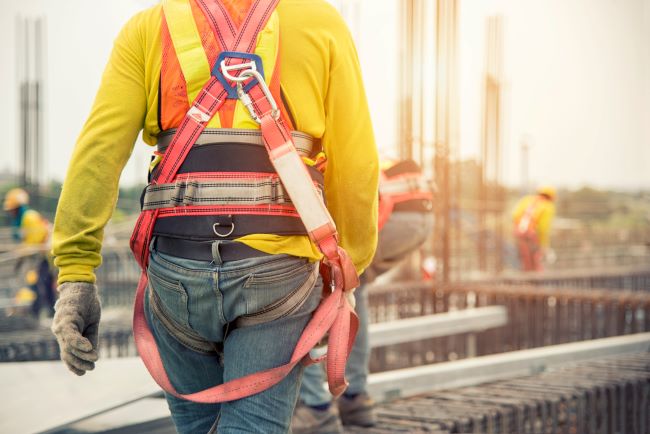Construction is a dangerous industry. Injury prevention strategies can help keep workers safe, projects running smoothly, and costs down.
According to the U.S. Bureau of Labor Statistics (BLS), the private construction industry accounted for nearly one in five of all workplace fatalities in 2021 – a larger share than any other sector. There were also 169,200 nonfatal construction injuries that year, according to the BLS. This works out to a rate of 2.5 injuries per 100 workers.
Injuries can be devastating for workers and their families, but they can also be disastrous for project managers. The loss of a worker to an injury can make it difficult to meet deadlines, especially when crews are already struggling with labor shortages. Injuries can also negatively impact morale, contributing to lower productivity and possibly causing other workers to quit. After an injury, OSHA may investigate, which can result in a fine for the employer. Employers may also face workers’ compensation claims and higher workers’ comp rates in the future.
Preventing injuries is in everyone’s best interest. The following strategies can help.
1. Train Your Workers on Safety Measures
The construction industry is currently experiencing a skilled worker shortage. The Associated Builders and Contractors estimates that, to keep up with demand, construction employers in 2023 will need to hire an additional 546,000 workers on top of the workers they would normally hire.
These new workers will be at a higher risk of injuries than those who have been working at the same company for several years. According to Travelers, 34% of workplace injuries occur during the first year on the job. To reduce injuries among new workers, training is critical. Even experienced workers can benefit from brushing up on their training occasionally. This training should cover:
- How to use personal protective equipment and other equipment safely. Don’t assume workers know how to use all the equipment you have.
- The safety protocols at your company to avoid injuries. For example, since falls are a common injury in construction, workers need training on proper scaffolding and other fall safety measures.
- What they should do if they feel unwell or unsafe. For example, if they feel dizzy from the heat, they should know what to do to prevent serious heat-related illness.
- What unsafe practices are prohibited. Make it clear that you will not tolerate things like roughhousing and alcohol or drug use on the job. Outline the consequences of engaging in these unsafe behaviors.
2. Make Safety a Priority
Although some injuries may occur due to random and unpredictable events, many incidents stem from unsafe habits that develop over time. To avoid injuries, foster a culture of safety at your construction sites.
- Prioritize safety from the top down. A “do as I say, not as I do” approach sends mixed messages. If project leaders don’t prioritize safety, this attitude will trickle down.
- Align daily practices with safety policies. Make sure your daily practices allow workers to adhere to safety policies.
- Draw on OSHA resources. In addition to following OSHA standards, take advantage of OSHA’s construction resources, which include outreach efforts and special initiatives.
3. Take Personal Protective Equipment Seriously
Personal protective equipment can keep construction workers safe, but only if they wear it consistently and correctly.
- Show workers how to use personal protective equipment. This is especially important for new workers.
- Insist that workers use personal protective equipment all the time – no exceptions, no excuses.
- Make sure personal protective equipment fits properly. OSHA is proposing a revision to clarify its personal protective equipment fit requirements, stating that improperly-fitting personal protective equipment is particularly an issue for smaller construction workers. For example, some women may be unable to safely use standard-size personal protective equipment.
4. Leverage Emerging Technology
In recent years, new construction safety devices have entered the market. By reducing injuries – and therefore the associated project delays and workers’ compensation costs – safety technology can provide a good ROI. Use the National Safety Council’s ROI calculator to see how much you could save by investing in certain types of safety technology.
There are many safety devices to consider, including:
- Drones – By using drones to inspect and monitor hard-to-reach and risky areas, you can keep workers out of hazardous conditions and reduce the chances of an injury.
- Monitoring Devices – According to Electrical Contractor, smart watches, smart boots, and other wearable devices can detect overexertion, falls, location, proximity to electrical hazards, and other safety information.
- Exoskeletons – Workers can injure themselves if they try to lift more than is safe. Exoskeletons increase the wearer’s strength, allowing them to lift more without the risk of injury.
One More Thing to Consider
Although many injuries are avoidable, construction remains a high-risk industry. Insurance provides another layer of protection. RiskPoint can help you obtain the insurance coverage you need to protect your workers and projects. Learn more.


